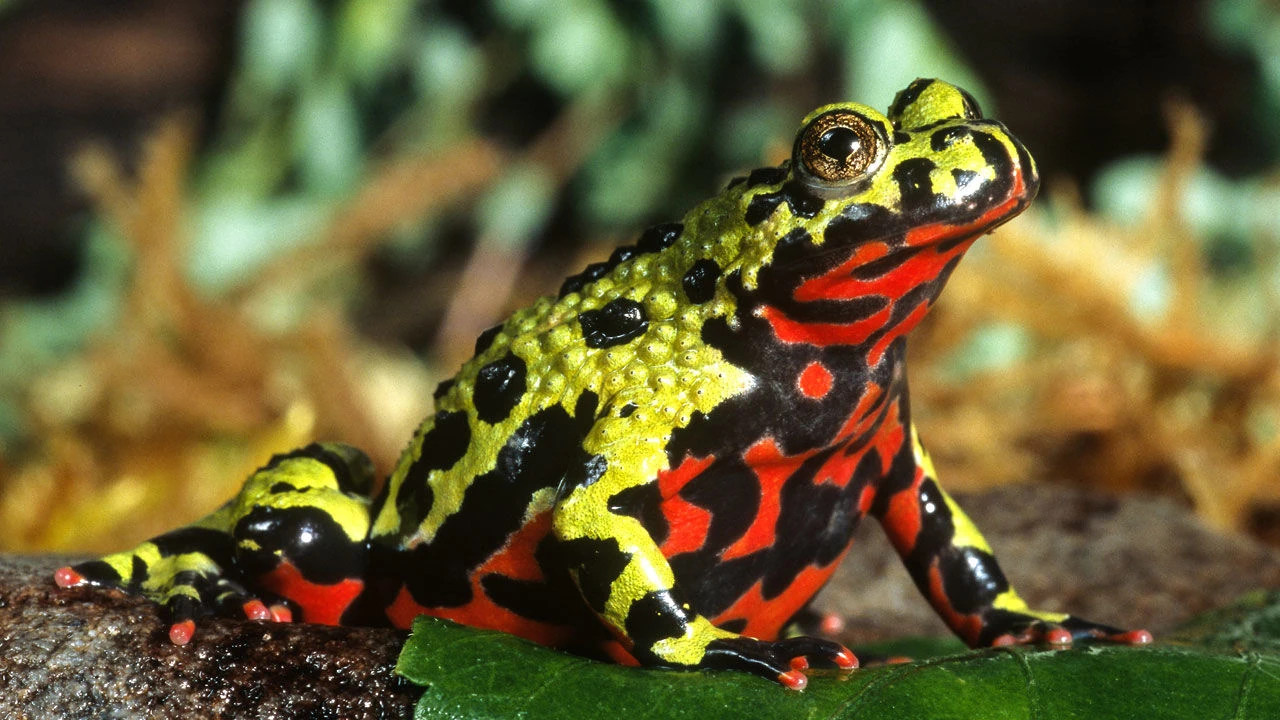
“Exploring the Vibrant World of the Oriental Fire-Bellied Toad”
The Oriental fire-bellied toad (Bombina orientalis) is a captivating amphibian species known for its striking appearance and lively behavior. Found in various habitats across East Asia, from Korea to northeastern China and parts of Russia, this colorful toad has earned a special place in the hearts of amphibian enthusiasts and nature lovers worldwide.
Physical Characteristics
One of the most distinctive features of the Oriental fire-bellied toad is its vibrant coloration. Its dorsal surface typically displays shades of green or olive, adorned with contrasting black markings that form intricate patterns. The ventral side of the toad, however, boasts vibrant hues of red or orange, often accompanied by bold black spots or marbling. This colorful display serves as a warning to potential predators, signaling the presence of toxic skin secretions.
Habitat and Distribution
The Oriental fire-bellied toad is primarily found in moist habitats such as marshes, ponds, and slow-moving streams within forested areas. It prefers shallow, freshwater bodies with ample vegetation, which provide both shelter and hunting grounds. Despite its specific habitat requirements, this adaptable species can also thrive in human-altered landscapes, including rice paddies, garden ponds, and even urban parks.

Behavior and Diet
Despite its small size, the Oriental fire-bellied toad is an active and voracious predator. It feeds primarily on a diet of insects, spiders, and other small invertebrates, which it captures using its sticky tongue. Toads are nocturnal hunters, preferring to forage under the cover of darkness when potential prey is most abundant.
In addition to its feeding habits, the Oriental fire-bellied toad is known for its unique defensive behavior. When threatened, it will arch its back, raise its limbs, and expose its brightly colored underside as a warning signal to predators. If further provoked, it may release toxic skin secretions, which can cause irritation or discomfort to potential predators.
Conservation Status
While the Oriental fire-bellied toad is currently listed as a species of least concern by the International Union for Conservation of Nature (IUCN), it faces threats from habitat loss, pollution, and collection for the pet trade. Conservation efforts focused on habitat preservation, sustainable land management, and education are essential for ensuring the long-term survival of this charismatic amphibian species.
Cultural Significance
In addition to its ecological importance, the Oriental fire-bellied toad holds cultural significance in various East Asian traditions. In some cultures, it is revered as a symbol of luck, prosperity, and protection against evil spirits. Its vibrant colors and lively demeanor have also inspired artistic depictions in literature, folklore, and visual arts throughout history.
In conclusion, the Oriental fire-bellied toad serves as a colorful ambassador for the rich biodiversity of East Asia’s wetland ecosystems. With its striking appearance, lively behavior, and cultural significance, this charismatic amphibian continues to enchant and inspire admiration among nature enthusiasts and conservationists worldwide.





